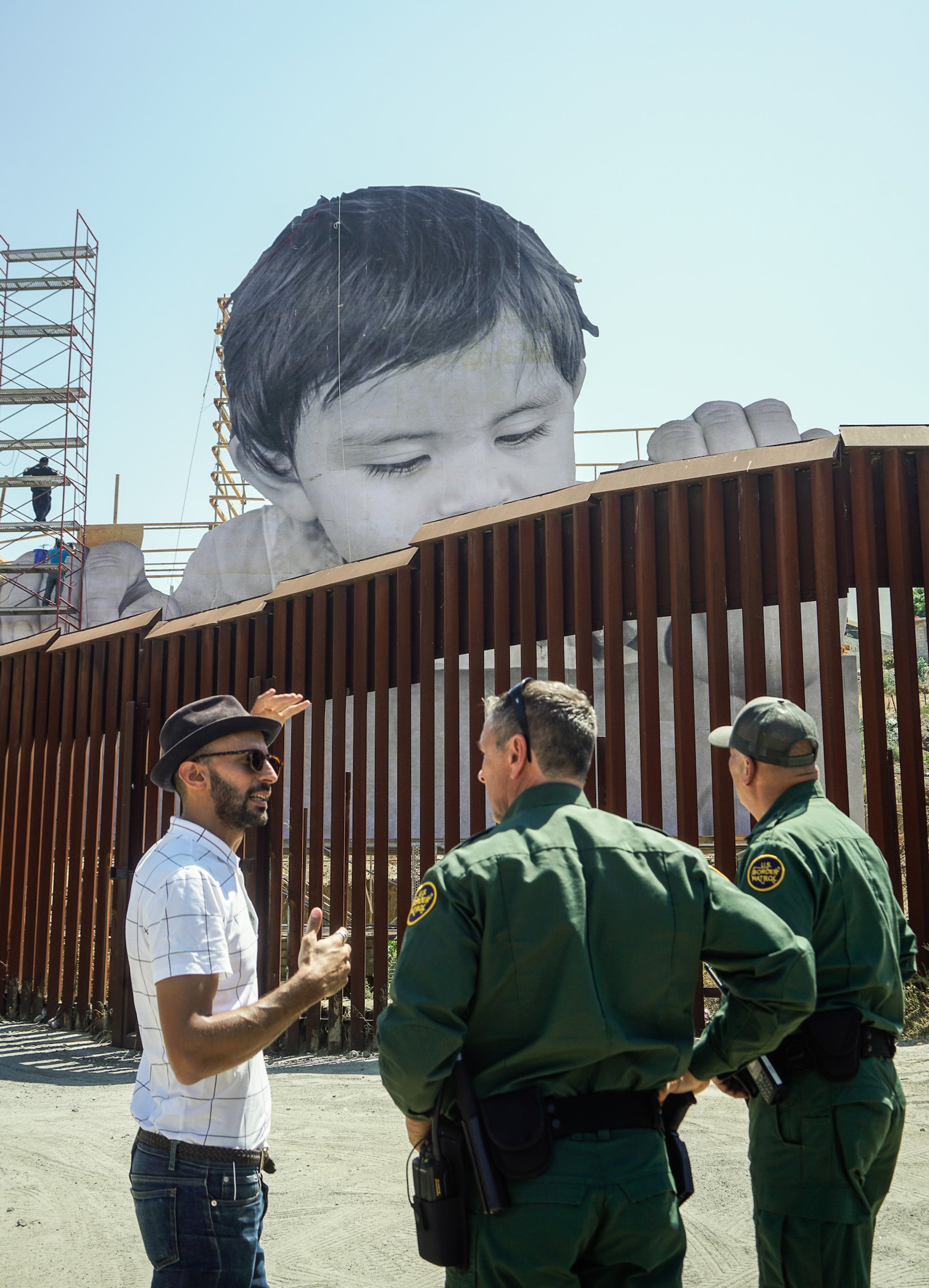Getting away with things is a specialty of the fast-talking French artist JR, whose signature achievement, among many, may have been placing a giant photocopy of the image of a child seeming to grasp onto the US border wall from the Mexican side.
It’s not that JR ever hides anything. The artist with a vast social media base follows the strategy that art works most effectively when you can’t escape it. As we see in his latest film, Paper & Glue, one of JR’s special gifts is to make subversive images seem not just unthreatening, but irresistible.
JR’s films, which tour through his projects, can feel like journal entries. They are also journeys that open onto the world of their subjects, which are always people.
Visage Villages (Faces Places) was a 2017 collaboration with the late French New Wave director Agnès Varda, which traveled through provincial France, as some of Varda’s earlier docs did. In the film, JR depicted the people encountered in those places in photo-murals pasted to building walls, enlarging and refining his earlier Parisian street art practice. JR calls the fragile paper and glue portraits “pastings.”
Think of Christo and Jeanne-Claude, then remove the massive sponsorship hype, and think of someone who alters the landscape dramatically but discreetly to show who lives there. Like Christo and Jeanne-Claude did, JR funds his projects with sales of his work on a smaller scale. Unlike Christo and Jeanne-Claude, his interventions in cities or landscapes are not construction projects, but experiments that in the future might be achieved without him.
Banksy is another artist that JR brings to mind, especially in hit-and-run graffiti videos from his early days in Paris. Those nighttime raids earned him arrests and fines, which JR left France for a year to avoid paying. As with the secretive Banksy, the name JR is an alias. Everything else about the Frenchman is public information for his legions of followers.

Artist JR speaks with officials at the US-Mexico border during a project. Photo by Marc Azoulay.
In Paper & Glue, he’s at the US-Mexico border, then in a maximum security prison at Tehachapi in the stark California desert, and in housing projects shaken by riots outside Paris, where he films apartment blocs being demolished. He also goes to a violent drug-plagued favela in hills above Rio de Janeiro, where he covers steep staircases with the faces of neighborhood women, widows old and young, whom he sees as local stalwarts.
JR admits that he can’t paint, but he can make a film. His cinematic language is an accelerated tactility, not the meditative Agnes Varda deadpan, plus drones. His cinematic influences include La Haine (Hate) by Mathieu Kassovitz, a 1995 no-budget banlieue (suburb) film in black and white. His artistic influences, picked up after his graffiti-scrawling days, include Henri Cartier-Bresson and, yes, Christo.
JR is a director who can facilitate a process. It’s gutsy and improbable for a French artist with a heavy accent, sunglasses and a funny hat, to be sitting around a table with prisoners serving long sentences at Tehachapi. Heavily tattooed—one with a swastika on his cheek—the prisoners team up with guards to glue long strips of massive photocopies of themselves to a broad exercise yard floor, atop blood stains from a recent stabbing.

Aerial view of an installation by JR at a prison in Tehachapi, California. Courtesy JR.
At Tehachapi, the portraits are best seen overhead from a drone. They disappear by design after prisoners walk on them. JR says the enduring product of his projects is the comradery of the people who make them. He can sound motivational, and he does have the gifts of a salesman. The effect can be rousing. It still doesn’t always work. French prisons won’t let JR in. Rikers Island let him paste, but not film.
Now JR is headed mainstream. Executive producers Ron Howard and Brian Grazer (The Da Vinci Code, Apollo 13 and Parenthood) will show Paper & Glue on MSNBC next month (before streaming on Peacock) after an initial run in US cinemas. For the smooth, gregarious Frenchman, who’s as sincere as Ron Howard, could “Stop the Steal” Americans be his next subjects to paste?
- Paper & Glue opens in select US theaters 12 November





